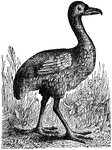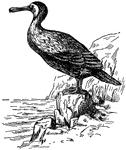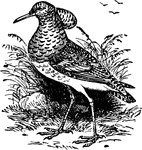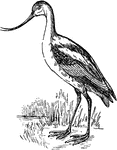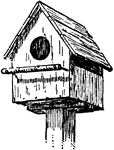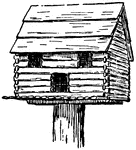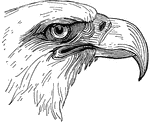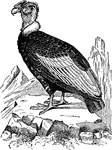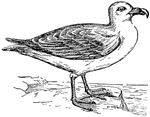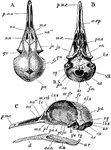
Rock Pigeon Skull
"Columba livia. Skull of young specimen. A, dorsal; B, ventral; C, left side. al. s, alisphenoid; au,…

Rock Pigeon Manus
"Columba livia. Left manus of a nestling. The cartilaginous parts are dotted. cp. 1, radiale; cp. 2,…

Rock Pigeon Innominate
"Columba livia. Left innominate of a nestling. The cartilage is dotted. ac, acetabulum; a. tr, anti-trochanter;…

Rock Pigeon Embryo Foot
"Columba livia. Part of left foot of an unhatched embryo. The cartilage is dotted. mtl. 2, second; mtl.…
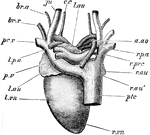
Pigeon Heart
"A, heart of the pigeon, dorsal aspect. a. ao, arch of aorta; br. a, brachial artery; br. v, bachial…
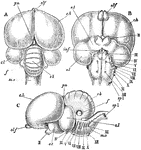
Rock Pigeon Brain
"Columba livia. The brain; A, from above; B, from below; C, from the left side. cb, cerebellum; c. h,…

Male Rock Pigeon Genitalia
"Columba livia. Male urino-genital organs. adr, adrenal; cl. 2, urodaeum; cl. 3, proctodaeum; k, kidney;…
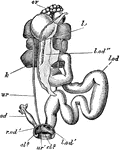
Female Rock Pigeon Genitalia
"Columba livia. Female urino-genital organs. cl. 2, urodaeum; cl. 3, proctodaeum; k, kidney; l. od,…
Cassowary Feather
"Casuarius (Cassowary). Feather, showing after-shaft and disconnected barbs." -Parker, 1900

The Bird of Paradise
The Bird of Paradise is the common name of a family of birds, Paradiseide of ornithologists, found chiefly…
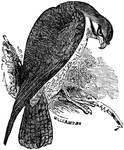
The Falcon
"The Falcon is a famous bird of prey. It is characterized by a bill curved from the base."

American Blue Jay
"The American Blue Jay is a beautiful bird that is common near all sections of the United States, from…

The Skylark
"The Skylark is one of the best known British birds, and not withstanding the tameness of its brown…
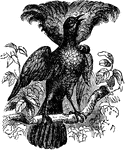
Promerops Superba Bird
" A genus of insessorial birds many of which are remarkable for the beauty of their plumage. They have…
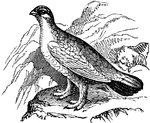
Ptarmigan Bird
"A bird of the grouse family (Tetraonidae) distinguished from the true grouse by having the toes as…
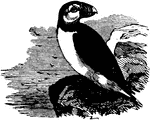
Common Puffin
"The name for the marine diving birds of the genus Fratercula. The common puffin is a native of the…
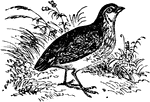
Common Quail
A genus of rasorial birds, included in the family of partridges, to which they are nearly allied, but…
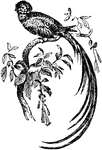
Quezal Bird
A most beautiful Central American bird of the Trogon family. It is about the size of a magpie and the…
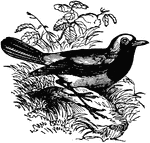
Redstart Bird
A bird belonging to the family Sylviadae, nearly allied to the nearest, but having a more slender form…
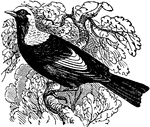
Regent Bird
A very beautiful bird of Australia, belonging to the family Meliphagidae or honey-eaters. The color…
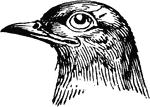
Head of Cuckoo
The head of a Cuckoo, a bird belonging to the Scansores order. Scansores is an order of birds, popularly…
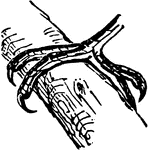
Foot of a Cuckoo
The foot of a Cuckoo, a bird belonging to the Scansores order. Scansores is an order of birds, popularly…
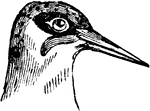
Head of a Green Woodpecker
The head of a Green Woodpecker, a bird belonging to the Scansores order. Scansores is an order of birds,…
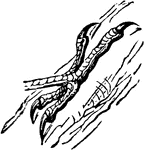
Foot of a Green Woodpecker
The foot of a Green Woodpecker, a bird belonging to the Scansores order. Scansores is an order of birds,…

Head of a Great Jacamar
The head of a Great Jacamar, a bird belonging to the Scansores order. Scansores is an order of birds,…
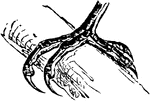
Foot of a Great Jacamar
The foot of a Great Jacamar, a bird belonging to the Scansores order. Scansores is an order of birds,…

The Superficial Muscles of a Hawk
In birds the muscles system is remarkable for their marked line of attachment to their tendons. Labels:…
The Alimentary Canal of a Fowl
Birds usually have three cavities or stomachs. Labels: 1, The esophagus. 2, Ingluvies (crop). 2, Proventriculus…
The Alimentary Canal of the Flying Lizard
In reptiles the alimentary canal differs much from that of mammals or birds. As a general rule, it is…

The Right Lung of a Goose
In birds the lungs are confined to the back wall of the chest. They are not separated into lobes, but…

Section of the Lung of a Bird
In birds the lungs are confined to the back wall of the chest. They are not separated into lobes, but…
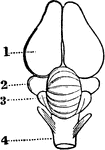
Brain of a Bird
In birds the hemispheres are not united as in humans; the cerebellum is proportionately larger than…
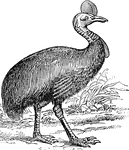
Cassowary
A large running bird native to New Guinea and northeastern Australia. A relative of the ostrich.
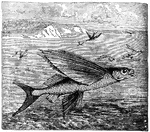
The Flying Fish (E. Volitans)
"These Flying-fishes in their common element are harassed by the attacks of other inhabitants of the…
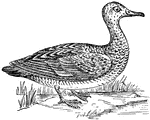
Gadwall
"Gadwall, a rather large fresh-water duck, common in the interior of the United States and breeding…
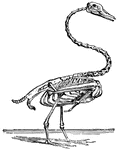
Skeleton of the Swan
"The external air penetrates into every part of their body by the respiratory tubes, which ramify the…
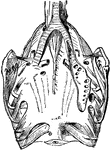
Respiratory Organs of a Pigeon
"The external air penetrates into every part of their body by the respiratory tubes, which ramify the…

Lungs of a Pigeon
"The external air penetrates into every part of their body by the respiratory tubes, which ramify the…

Wing of an Eagle
"The more angular the wing of birds - that is to say, the longer the feathers on the edge of the wing…
Wing of a Penguin
"Besides flight, birds possess other means of locomotion, being formed for walking, swimming or flying,…



